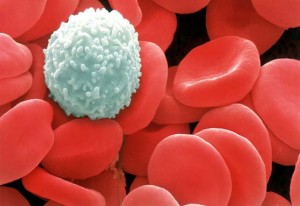 Two adults with a rare disease that causes gradual loss of eyesight had their vision improved after being treated with a new gene therapy, according to preliminary results from a new study.
Two adults with a rare disease that causes gradual loss of eyesight had their vision improved after being treated with a new gene therapy, according to preliminary results from a new study.
The study involved six patients ages 35 to 63 with choroideremia, an inherited condition with no cure that causes vision problems early in life, and eventually leads to blindness. Patients have a mutation in a gene called CHM, which causes light-sensitive cells in the eye to slowly stop working.
The goal behind the new gene therapy is to use a safe virus to deliver a working copy of the gene to the right part of the eye to prevent the cells from degenerating.
The new study was an early test of the therapy in which the researchers aimed to carry out the treatment without causing damage to the eye. (Patients must have an eye surgery so that the virus can be injected under the retina with a fine needle).
The result showed that the treatment did not cause harm, and in fact, improved vision in a few of the patients.
Six months after the treatment, four patients recovered the visual acuity (clearness or acuteness of vision) that they had before the surgery, and developed increased sensitivity to light. And two patients had improvements in vision: They were able to read two to four more lines on a sight chart.
“We did not expect to see such dramatic improvements in visual acuity,” study researcher Robert MacLaren, of the Nuffield Laboratory of Ophthalmology at the University of Oxford in the U.K., said in a statement. It is still too early to know if the improvements will last, but they have so far been maintained for as long as two years, MacLaren said.
The study is the first to test gene therapy in patients before they’d experienced significant thinning of the retinal cells, MacLaren said. click
“Our findings hold great promise for gene therapy to prevent loss of sight in other retinal diseases such as age-related macular degeneration,” MacLaren said.
The researchers are now studying the effects of higher doses of gene therapy to find out what level is needed to stop degeneration, MacLaren added.
“It’s a very small [study] but the concept is very promising,” said Dr. Mark Fromer, an ophthalmologist at Lenox Hill Hospital in New York City, who was not involved in the study.
“Those genes that they’re injecting essentially have the ability to make the correct protein” that is unavailable in patients with defective genes, Fromer said. click
While larger studies are needed, “it’s the right track” to attempt to correct the problem in patients before they’ve experienced significant vision loss, Fromer said.
With regard to using the therapy to treat other types of vision loss, Fromer said, “It’s is a long road, but it makes a lot of sense to try to treat the disease before it’s caused any damage.”
The study is published in today’s (Jan. 15) issue of the journal The Lancet. src – live science

